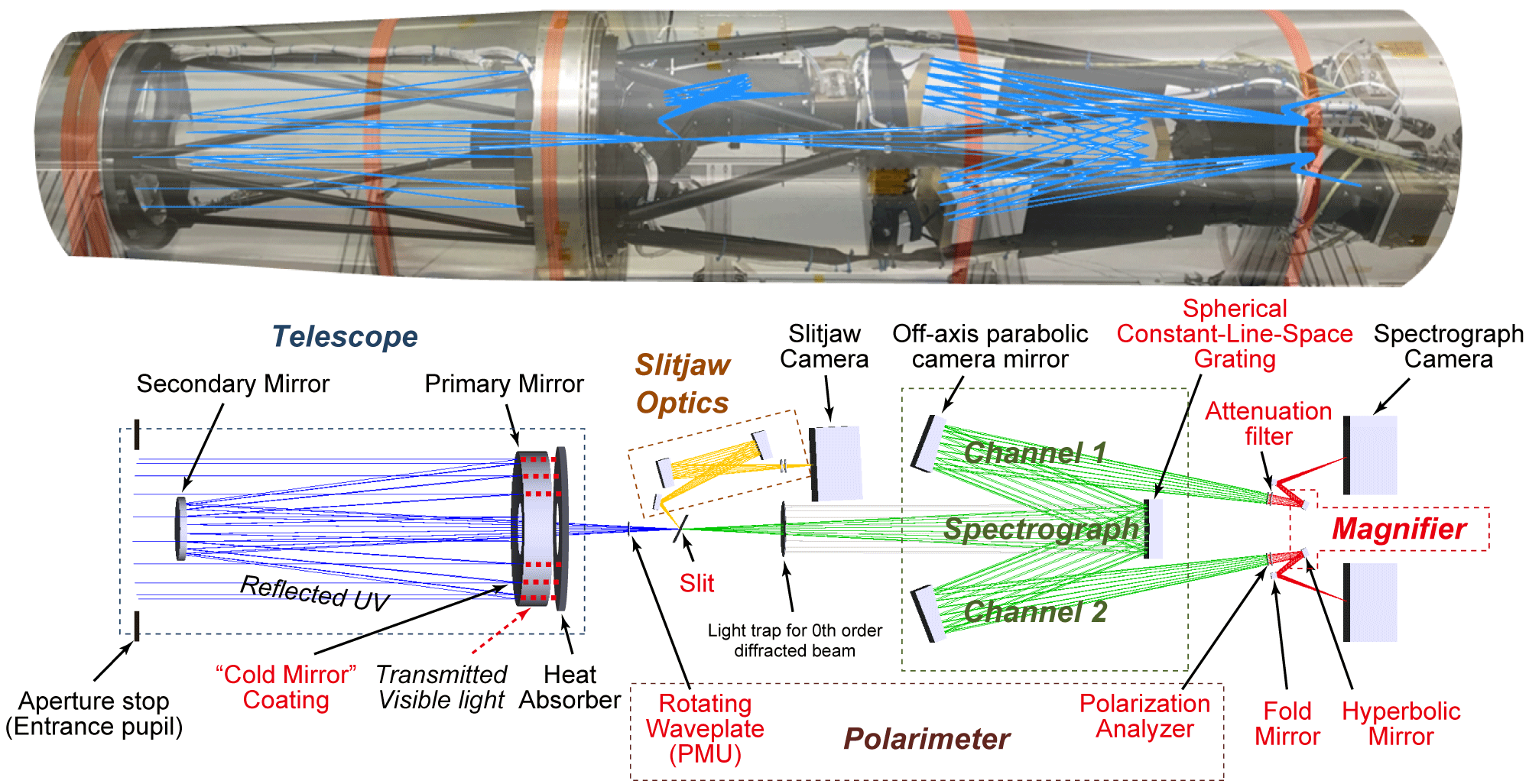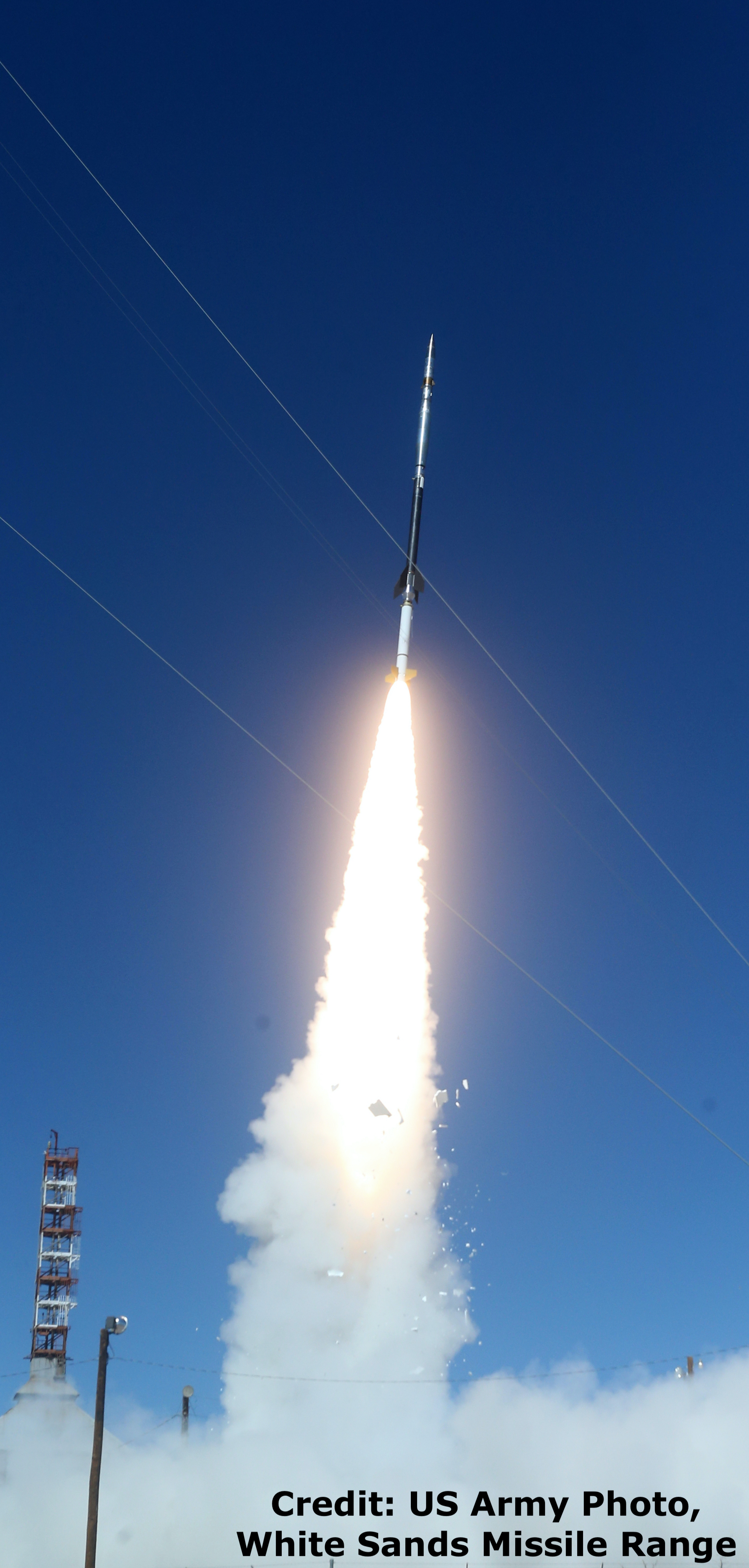Sounding Rocket Experiment CLASP2

CLASP2 (Chromospheric LAyer Spectro-Polarimeter) and CLASP2.1 are international sounding rocket experiments which aim at measuring the magnetic fields in solar hot atmospheric layers by observing the polarization in UV with high precision and accuracy. CLASP2 and CLASP2.1 were flown on April 11 2019 and on October 8 2021 at the White Missile Range in USA.
Release
What is the CLASP2?
Science Goal
The outermost layer of atmosphere of the Sun, corona, is made of extremely high-temperature gases of millions of degrees, while the solar surface is nearly 6,000 degrees. The mechanism to generate such a high-temperature atmosphere is not yet understood. This is known as the “coronal heating problem,” which is one of the most important questions in astrophysics. Recent observations including Hinode (2006-) and IRIS (2013-) satellites and theoretical approaches have indicated that the interface region, the chromosphere, between the solar surface and the corona plays an important role in the heating process. In particular, magnetic fields in the chromosphere are considered to be strongly related to the dynamic gas motions and energy transfer into the corona from the lower atmosphere. Therefore, understanding the property and behavior of the chromospheric magnetic fields is necessary to solve the coronal heating problem.
We are able to measure the magnetic field by observing the polarization states, i.e., the degree and the direction of the polarization. However, the magnetic fields in the solar chromosphere, especially at the top layer of the chromosphere is not measurable with already-existing instruments including the Hinode and ground-based telescopes, and new instruments are being developed all over the world. Meanwhile, our international team focuses on the polarization induced in the ultraviolet (UV) spectral lines, which requires the observation from the space and has not been explored before. Recent developments in the theory and numerical modeling have suggested that the UV lines that originate in the upper chromosphere and transition region should show measurable polarization signals which are sensitive to the magnetic fields.
From CLASP to CLASP2
On September 2015, an international research team from Japan, USA, and Europe carried out a Chromospheric Lyman-Alpha SpectroPolarimeter (CLASP) sounding rocket experiment, to verify a new technique to observe the magnetic fields in the chromosphere. CLASP observed the UV light emitted by neutral hydrogen atoms (Lyman-alpha line) at the wavelength of 121.6 nm, and detected the scattered polarization and their modulation by magnetic fields (Hanle effect) in the solar atmosphere, which hitherto has been predicted only in theory. This mission opened a new window in solar observations.
However, the CLASP observations could not accurately measure the physical quantities of magnetic fields in the chromosphere. Hence, the Chromospheric LAyer SpectroPolarimeter 2 (CLASP2) mission was founded. CLASP2 aims to observe the UV light emitted by ionized magnesium atoms around the wavelength of 280 nm and detect the scattered polarization, as well as the Hanle and Zeeman effects, to quantitatively measure the vector magnetic fields in the chromosphere.
CLASP results are here.
CLASP2 Instrument


CLASP2 instrument consists of a telescope, a spectrograph with a polarimeter system (spectropolarimeter), and a slitjaw imaging system. The spectrograph is based on the inverse Wadsworth configuration which was adopted in the CLASP. The grating also serves as a beam splitter allowing to reduce the number of optical elements and to measure the two orthogonal polarizations simultaneously.
Like CLASP, the CLASP2 mission was carried out by international collaborations. Japan spearheaded instrument development and testing using the facility of the UVSOR Synchrotron Facility at Institute for Molecular Science (for evaluation of the optical elements in UV) and the Advanced Technology Center at the National Astronomical Observatory of Japan (for I&T); diffracting grating was procured from France, while the CCD cameras were procured from the US.
We reused the main structure and optical elements as much as possible from CLASP instrument. CLASP instrument was recovered without any damage after the mission, shipped back to Japan, and refitted. By doing so, the turnaround time and costs were significantly reduced.
CLASP2 Launch

The CLASP2 sounding rocket experiment was launched on April 11, 2019 at 10:51 local time, (01:51 JST on April 12) from the White Sands Missile Range in New Mexico, USA. The CLASP2 payload was separated after the launch and flew along a ballistic trajectory in space. It observed the Sun from above 160 km for 6 min and reached a maximum altitude of 274 km. After the observations, the instrument payload descended by a parachute and landed on the White Sands Desert, from where it was transported back to the laboratory. All data stored in the instrument were recovered successfully.
The CLASP2 observed three targets on the Sun, including (1) The center of the solar disk for 18 s to calibrate the instrument, (2) a plage with a strong magnetic field for 155 s to measure magnetic fields by confirm the Hanle and Zeeman effects, and (3) a quiescent region with a weak magnetic field for 134 s to measure scattered polarization. The CLASP2 team analyzed the plage data quickly and found strong polarization signals. Hence, vector magnetic fields are expected to be measured in the UV observation for the first time. Data observed in the quiescent region are compared with the result from CLASP, to measure the advantages and disadvantages of the Lyman-alpha and magnesium lines. It will be useful to discuss next-generation instruments for future satellites.
